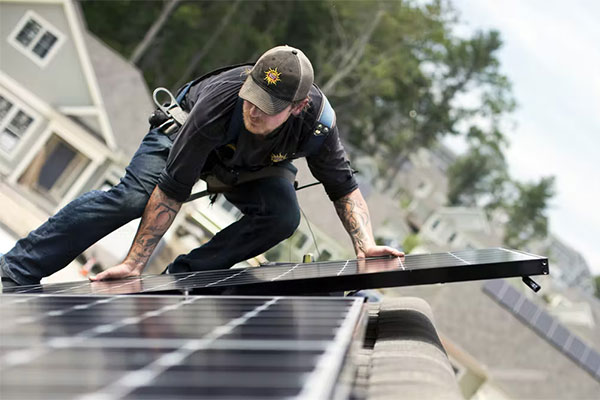The U.S. Department of Energy has announced a $20 million funding opportunity, including $8 million from the Bipartisan Infrastructure Law, to minimize the use of solar energy system materials, improve installation quality and resilience of photovoltaic (PV) systems, and streamline the reuse and recyclability of solar panels.
This funding opportunity will also set up a Solar Partnership to Advance Recycling and Circularity (Solar PARC) to improve materials recovery and develop safe end-of-life practices for PV system components.
The goal is to enable rapid solar energy deployment in the United States over the next decade, creating jobs in communities across the country that support the Biden-Harris Administration’s ambitious climate goals. This is an exciting development in the field of renewable energy and sustainability.
Accelerating Solar Energy Deployment: A Pathway to Sustainability and Job Creation
The Biden-Harris Administration set ambitious climate goals for the United States. One of these goals is to achieve a carbon pollution-free power sector by 2035 and a net-zero emissions economy by no later than 2050. To achieve these goals, the administration has proposed historic investments in U.S. infrastructure, including renewable energy technologies such as solar energy.
Solar energy is the fastest-growing source of new electricity generation in the nation, and it will play an important role in reaching the administration’s goals.
According to preliminary results of an upcoming analysis by the National Renewable Energy Laboratory (NREL), to reach a largely decarbonized electricity sector by 2035, solar deployment would need to accelerate to three to four times faster than its current rate by 2030.
Renewable energy and sustainability are closely related concepts.
Renewable energy refers to energy that is derived from resources that can be replenished naturally on Earth, such as wind, water, and sunlight. Sustainability, on the other hand, refers to the ability to meet the needs of the present without compromising the ability of future generations to meet their own needs.
Sustainable energy is extracted from sources that can never be depleted and that have minimal negative impact on the environment. Renewable energy sources such as wind, hydroelectric power, solar, and geothermal energy are generally far more sustainable than fossil fuel sources.
The widespread adoption of renewable energy technologies such as solar power can help reduce greenhouse gas emissions and combat climate change.
In addition to being a green initiative, renewable energy can also create new jobs and stimulate economic growth. A pathway to a largely decarbonized electricity sector by 2035 can add millions of new jobs across clean energy technologies, including potentially 500,000–1,500,000 people working in solar by 2035.
Investments in renewable energy can also help reduce our dependence on fossil fuels and improve our energy security.
However, as we transition to a more sustainable future powered by renewable energy, it is important to consider the end-of-life management of renewable energy technologies such as solar panels. Solar panels have an estimated operational lifespan of about 30-35 years, although some may produce power much longer. As more solar panels reach the end of their useful life in the coming decades, it will be important to develop sustainable end-of-life practices for photovoltaic (PV) systems.
This includes improving materials recovery efficiency and developing safe end-of-life practices for PV system components such as modules and inverters.
The Biden-Harris Administration has set ambitious climate goals for the United States that include transitioning to a carbon pollution-free power sector by 2035 and a net-zero emissions economy by no later than 2050. Achieving these goals will require significant investments in renewable energy technologies such as solar power.
Renewable energy is closely related to sustainability and can help reduce greenhouse gas emissions and combat climate change while also creating new jobs and stimulating economic growth. As we transition to a more sustainable future powered by renewable energy, it is important to consider the end-of-life management of renewable energy technologies such as solar panels.















Comments